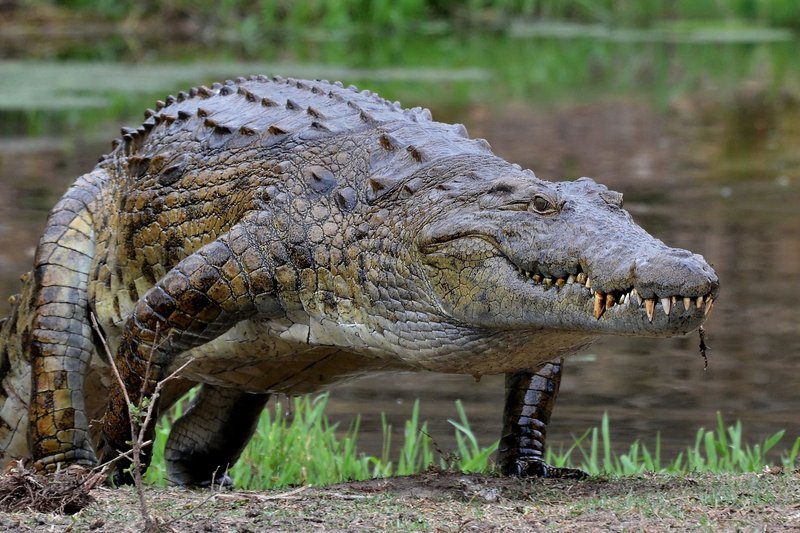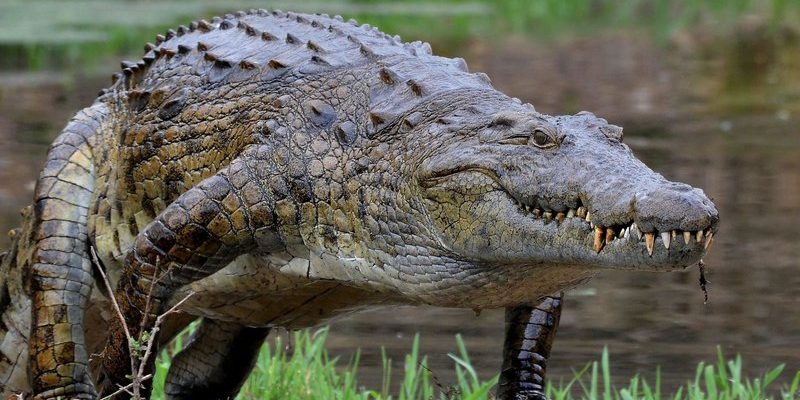
The Nile crocodile, or *Crocodylus niloticus*, is found in various habitats across Africa, particularly along the banks of the Nile River. They thrive in freshwater habitats, including lakes, rivers, and wetlands. Despite their reputation, they are essential for maintaining ecological balance. Let’s dive deeper into understanding their roles, interactions, and the delicate balance they help sustain in their environments.
Understanding Nile Crocodiles
Nile crocodiles are among the largest reptiles in the world, growing up to 20 feet long. With their long, powerful jaws and sharp teeth, they are perfectly designed for hunting. But they’re not just brute force; their behavior and adaptations showcase a fascinating blend of instinct and intelligence. For example, they often use stealth to approach prey, and their tough, scaly skin protects them from predators and helps them camouflage in their surroundings.
Their diets are diverse, ranging from fish to larger mammals, making them opportunistic feeders. You might be wondering, how do they decide what to eat? It often depends on the availability of food and their size. Juvenile crocs tend to feed on smaller fish and insects, while adults might take down larger prey, sometimes even including antelope or zebras that come too close to the water’s edge.
In terms of social behavior, Nile crocodiles have a surprising level of interaction. They communicate with each other through a series of vocalizations, particularly during the mating season or if threatened. Honestly, it’s fascinating to observe how these seemingly solitary creatures can exhibit social behaviors.
The Nile Crocodile’s Role as a Predator
Nile crocodiles are apex predators and play a significant role in controlling the populations of various species around them. By preying on sick or weak animals, they help maintain healthy populations of other wildlife. This natural selection process is important because it ensures that only the fittest individuals reproduce, which strengthens the ecosystem’s overall health.
Imagine a pond bursting with life. If too many fish thrive without a natural predator, the delicate balance can shift. The Nile crocodile helps prevent overpopulation of certain species, allowing for a balanced ecosystem where different species can coexist. This is nature’s way of enforcing order, and crocodiles are key players in that game.
Moreover, their predatory behavior also impacts the habitats around them. For example, when they hunt fish, they can help control the fish population in rivers and lakes, thereby influencing the vegetation around those water sources. It’s like a ripple effect, where one action leads to several changes throughout the ecosystem.
Contribution to the Food Chain
The role of Nile crocodiles in the food chain goes beyond just hunting. When they consume prey, they also become food for other animals after they die. Scavengers, such as vultures and hyenas, benefit from the remains, ensuring that nothing goes to waste. This decomposition process enriches the soil as well, promoting fresh plant growth.
You might find it interesting that even their feces contribute to the ecosystem. Yes, crocodile poop! It contains nutrients that support aquatic plants and algae, which serve as foundational food sources for many aquatic organisms. So, when you think about their impact, it definitely stretches well beyond their immediate presence in the water.
Furthermore, their nesting habits also support biodiversity. Nile crocodiles create nests where they lay eggs, and once the hatchlings emerge, they often stay close to their mother for protection. This nurturing behavior not only helps ensure the survival of the young crocs but also allows other species to thrive in a safe environment.
Impact on the Ecosystem
The Nile crocodile is often described as a keystone species, meaning their presence has a disproportionate effect on their environment. This designation arises from their unique ability to shape their habitat and influence other species. Without crocodiles, entire ecosystems could suffer disruption.
For instance, the reduction or absence of crocodiles could lead to overpopulation in prey species, which might then overgraze vegetation near water bodies. This could eventually lead to soil erosion, negatively impacting the entire ecosystem. In essence, Nile crocodiles act as a stabilizing force, helping maintain the balance that keeps their environment healthy.
Some studies suggest that when crocodile populations decline, it can trigger a series of ecological issues that affect both aquatic and terrestrial life. This ripple effect highlights just how interconnected all species are, emphasizing the importance of conservation efforts for these remarkable reptiles.
Conservation Challenges
Like many wildlife species, Nile crocodiles face threats from habitat loss and poaching. Factors such as climate change, pollution, and human encroachment on their habitats are putting added pressure on their populations. The irony is that while they are harmful to their prey, they are also vulnerable to human activities that disrupt their natural environments.
Efforts to conserve Nile crocodiles include habitat protection and anti-poaching measures. Creating protected areas where these reptiles can thrive is crucial. Education and awareness also play a vital role; when communities understand the importance of crocodiles, they’re more likely to support conservation measures.
Additionally, sustainable tourism can help fund conservation efforts. By showcasing the beauty and importance of Nile crocodiles, communities can incentivize preservation over exploitation. It’s a win-win, allowing people to connect with nature while ensuring these incredible reptiles continue to thrive.
The Future of Nile Crocodiles
Looking ahead, the future of Nile crocodiles depends on our commitment to conserve their habitats and understand their roles within ecosystems. With proper management and conservation strategies, these reptiles can continue to thrive in their natural environments. It’s up to us to appreciate their significance and work towards a balanced coexistence.
As we learn more about their behaviors and contributions, perhaps we’ll find new ways to protect them. Just like with any species, understanding the Nile crocodile can lead to better decisions that benefit both wildlife and humans. After all, the health of our ecosystems is intertwined with the health of our planet.
The Nile crocodile is much more than just a fearsome predator; it is a vital component of its ecosystem. From maintaining balance in the food chain to contributing to the health of aquatic habitats, these reptiles are truly remarkable creatures. By recognizing their role and supporting conservation efforts, we can ensure that Nile crocodiles continue to inhabit our rivers and lakes for generations to come. Here’s the thing: every creature has its place in the grand tapestry of life, and the Nile crocodile is a shining example of that.

